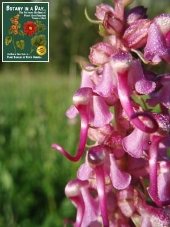
 1
1




 3
3









 1
1




http://www.popcliq.com (web development), GoPermaculture Food Forest http://www.permies.com/t/57687/forest-garden/Permaculture-Food-Forest-suburban-permaculture, Sea Buckthorn (Seaberry) grower (hobbiest) https://www.facebook.com/michelle.bisson.37, zone 3b/4b (borderline) Quebec Canada
 1
1








Michelle Bisson wrote:You can get a lot of fruit trees in a very small lot if you prune them small.
If it was my lot, I would try to get a fruit tree every 10 feet along the property line, or as many as I can fit. Any branches that are facing towards the fence gets pruned off. Many people espalier their fruit trees along the fence. This can be a lot of fun and very practical for small yards. Prune when your branches are young. They are quick to prune at that stage. I would put bushes in between my trees.
You will have to consider what trees & scrubs need mostly sun. Some can tolerate more shade like many of the scrubs since they are naturally understory plants.
Your young trees will need either wood chips or dried leaves as mulch. This will conserve water. After a few months, once you see that your trees are growing well, you will likely be able to let the rain take care of watering and only water if you have drought conditions.
I suggest that you read the book Gaia’s Garden: A Guide to Home-Scale Permaculture http://tobyhemenway.com/book/gaias-garden/






stone thegardener wrote:At my house, I dig a hole in the garden and bury the wet household waste.
...
Do you absolutely have to now?
The less mowing we do, the more pollinators... And so much easier to turn into a garden!

 2
2





"Your thoughts are seeds, and the harvest you reap will depend on the seeds you plant." - Rhonda Byrne
 2
2




"Your thoughts are seeds, and the harvest you reap will depend on the seeds you plant." - Rhonda Byrne




 The article seems great as well.
The article seems great as well. 1
1




Lori Whit wrote:Thank you. I will watch them both when I'm on a faster connection!
The article seems great as well.
"Your thoughts are seeds, and the harvest you reap will depend on the seeds you plant." - Rhonda Byrne
 3
3




I'd read somewhere that wood mulch spread diseases, so I hadn't planned on putting any around my trees. Sounds like I'd better break down and buy some! After I get paid next...
http://www.popcliq.com (web development), GoPermaculture Food Forest http://www.permies.com/t/57687/forest-garden/Permaculture-Food-Forest-suburban-permaculture, Sea Buckthorn (Seaberry) grower (hobbiest) https://www.facebook.com/michelle.bisson.37, zone 3b/4b (borderline) Quebec Canada




Thyri Gullinvargr wrote: Here's an article by the guy in the second video: http://pallensmith.com/2014/02/27/trash-can-compost-bin/
Michelle Bisson wrote:
I would try to avoid spending money on store bought mulch and try to find some free resources.





Lori Whit wrote:I love the look of the keyhole garden. It's so visually appealing, even the more rustic ones! As I look into it, though, it seems like 1) there's a lot of labor involved in setting them up, and 2) they're great in hot, drought-ridden areas. Here in PA there's generally lots of rain, very few droughts, and, although we have hot days, it almost never gets up near 100 (although with the humidity you'd think it was).
stone thegardener wrote:At my house, I dig a hole in the garden and bury the wet household waste.
...
Do you absolutely have to now?
The less mowing we do, the more pollinators... And so much easier to turn into a garden!
Maybe making a garden bed where I can bury some waste would work for me, at least for now.
(I know compost is a powerful thing, by the way. My parents did it for years, before finally giving it up as too much to keep up with...
As for mowing...I'm afraid I do. It really hurt when the neighbor mowed down the first violets of spring...
it was difficult for me to be near all those gas fumes. They're really bad for my health.
I want to convert the yard into food and flowers, maybe even a back-to-nature paradise if I'm lucky, but I can't just stop mowing for that to happen.
This is a good growing climate... The main thing will be building up the soil...




stone thegardener wrote:Not sure how setting up a "keyhole garden" can be any work...
stone thegardener wrote:Wait.....
The compost was too much to keep up with
 They're not avid gardeners by any stretch, and I've probably talked about them too much already.
They're not avid gardeners by any stretch, and I've probably talked about them too much already.




Lori Whit wrote:
stone thegardener wrote:Not sure how setting up a "keyhole garden" can be any work...
If you follow the links, yes, there is work involved.
 1
1




http://www.popcliq.com (web development), GoPermaculture Food Forest http://www.permies.com/t/57687/forest-garden/Permaculture-Food-Forest-suburban-permaculture, Sea Buckthorn (Seaberry) grower (hobbiest) https://www.facebook.com/michelle.bisson.37, zone 3b/4b (borderline) Quebec Canada
 1
1











"Your thoughts are seeds, and the harvest you reap will depend on the seeds you plant." - Rhonda Byrne
 1
1








 I've looked into square foot gardening, and it's pretty neat. Right now I'm growing just a few veggies in containers. They're pretty crowded, but I'm getting enough to suit myself at the moment: lots of lettuce, some tomatoes, and squash on the way.
I've looked into square foot gardening, and it's pretty neat. Right now I'm growing just a few veggies in containers. They're pretty crowded, but I'm getting enough to suit myself at the moment: lots of lettuce, some tomatoes, and squash on the way.
Miles Flansburg wrote:I built a compost tumbler out of one of those plastic drums years ago. Good compost goes through two levels of heating up. The second, hotter level , melted my barrel so I do not recommend using plastic to make compost.
Look up vermicomposting or composting with worms. They do a great job and make the best compost !
And yes anything that you can compost can just be buried in the garden, easy peezy.

 1
1












Ken W Wilson wrote:Before giving up on planting around the foundation, you might get the soil treated for lead.




 1
1









http://www.popcliq.com (web development), GoPermaculture Food Forest http://www.permies.com/t/57687/forest-garden/Permaculture-Food-Forest-suburban-permaculture, Sea Buckthorn (Seaberry) grower (hobbiest) https://www.facebook.com/michelle.bisson.37, zone 3b/4b (borderline) Quebec Canada




Michelle Bisson wrote:Where ever you bury compost matter, that is the best location to plant a tree or scrub or other. The newly planted plant will love it.

 1
1













 1
1









Things recompose in compost and we live in a food web.
Decomposing the food chain.









 1
1








Stanley Manley wrote:Hello. If it was me, I would start simple... maybe some walking onions, and blackberries raspberries and blueberries in large pots or raised beds.
Also, I would try to propagate some cuttings from that Japanese Maple tree and make some extra cash off the land.
Keep it simple and fun.
take it from there
 1
1




http://www.popcliq.com (web development), GoPermaculture Food Forest http://www.permies.com/t/57687/forest-garden/Permaculture-Food-Forest-suburban-permaculture, Sea Buckthorn (Seaberry) grower (hobbiest) https://www.facebook.com/michelle.bisson.37, zone 3b/4b (borderline) Quebec Canada
 3
3




 2
2





|
What are you saying? I thought you said that Santa gave you that. And this tiny ad:
Freaky Cheap Heat - 2 hour movie - HD streaming
https://permies.com/wiki/238453/Freaky-Cheap-Heat-hour-movie
|






